|

 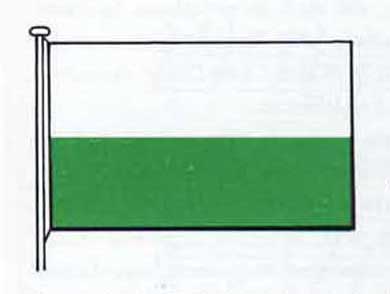 LANDESVERBAND
LANDESVERBAND  
 NEWSLETTER AND MAGAZINE
NEWSLETTER AND MAGAZINE 
HISTORY
AND POLITICS

 02/24/13 02/24/13

January February March
2010 Volume 5 Number 1



|



VISITING
AUTHOR-ARTICLE
JANUARY
2010

The
Sunic Journal
Interview
with Ann Morrison

On Tuesday, December 8, 2009, at 9 PM Eastern
US time, Tom interviewed film maker Ann Morrison.
In
this interview, Tom and Mrs. Morrison discussed her
soon to be released film The Forgotten Genocide.
It
aired on the Voice
of Reason Broadcast Network. The
interview is archived in mp3 format for download on Tom’s
page at the VoR site (archived shows
are listed on the right side of page). It is
also archived on this page at the end of this article.
Topics
for discussion included:
-
Ann's
background and how she became interested in the
topic of the ethnic cleansing of the German
populations in Eastern Europe after WWII
-
The
instrumental role of human rights advocate, Alfred
de Zayas, in the creation of the
film
-
German
refugees to the United States
-
People
and departments at Ann's
school who were involved in the making
of the film
-
Hostilities
directed at the project
-
Rare
photographs of the period included in the film,
including mass graves
-
People
interviewed for the film
-
The
public and private screenings (February 26th and
27th, 2010) and the conference to be held


www.molidorf.com

|

The
Forgotten Genocide Lecture Series
St.
Louis Community College - Meramec
Thursday,
February 25, 2010
Rooms
200, 201 Student Center
Friday,
February 26, 2010
Meramec
Theater
Saturday,
February 27, 2010

Click on
dates for schedules

|
Special
Thanks:
Professor John Messmer - Political
Science-Speaker
Dr. K. Dirk Voss-History - Interviewee
Dr. Steven H. Petersen Vice President of Student
Affairs
Professor Scott Dorough - Mass
Communications
Professor Susan Hunt Bradford -
Communication Arts
Ms. Donna Halsband - Service Learning
Coordinator
Dr. Pamela Garvey - English
Professor Eric Meyer - English
Ms. Toni
Oplt - Coordinator Campus Community
Relations/Marketing
Ms. Linda McGinnis - Community Relations
Specialist Coordinator/Alumni Affairs
Bonnie Sanguinet - Manager/Library
Services Instructional Resources
Paul Talaski - Director of Media Services
Professor Gary Gacksetter - Director-Music
Department
Richard Wilmore - Theater Manager |

|
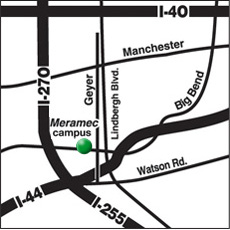
|
|
MERAMEC
Campus
11333
Big Bend Rd.
St. Louis, MO 63122-5720
Switchboard: 314-984-7500
Printable
Map |
|
 |

|

|
Kirkwood
Inn
1200
S Kirkwood Road
St
Louis, Missouri, 63122-7225
Phone:
314/821-3950
Fax:
314/984-9798
Toll
Free Reservations:
800-435-4656
|
|
HOTEL
DRIVING DIRECTIONS
From:
Interstate 44.
Take
Exit 277 B (Lindbergh Boulevard).
Drive
0.1 miles north to the Best Western
Kirkwood Inn. |
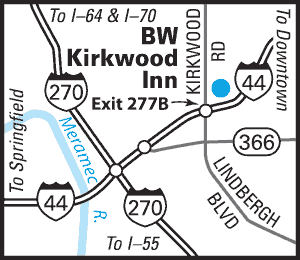 |
 |
Kirkwood
Inn
Reservation
Info |

|
Holiday
Inn Southwest
&
Viking
Conference Center
10709
Watson Road
St.
Louis, MO 63127
(314)
821-6600 or (800) 682-6338
|
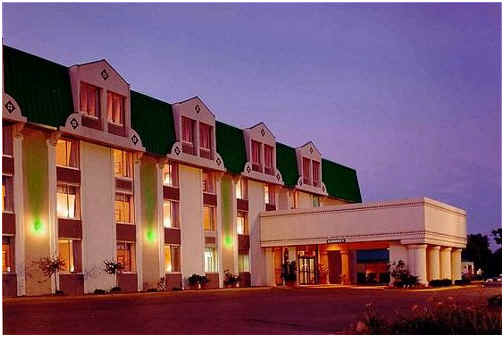 |
 |
HOTEL
DRIVING DIRECTIONS
Exit
highway 44 at Lindbergh, exit 277b.
Go
south 1 block.
Holiday
Inn St. Louis Southwest Hotel
Viking
Conference Center
is
at the corner of Lindbergh
and
Watson
On
the right.
|
|
Holiday
Inn Southwest
Reservation
Info |
 |

|

|
|

|



VISITING
AUTHOR-ARTICLE
JANUARY
2010

Volkstrauertag:
Port
Sheridan Cemetery
von
Magdalena Ippach
Forwarded
by American Aid Society, Chicago

Am Sonntag, den 15. November 2009, wurde im Friedhof
von Ft. Sheridan eine Gedachtnis Feier fur alle Verstorbenen
sowie die neun deutschen Soldaten abgehalten, die dort im
Jahre 1944 und 1945, fern von ihrer Heimat ihre letzte
Ruhestatte fanden. Die D.A.N.K. Gruppe Chapter Lake County,
Illinois, hielt die 30. Feier in Erinnerung an diese Manner
ab und legte einen schonen griinen Kranz mit einer
gelb-rot-schwarzen Schleife an jedes der neun Graber.
Es war ein kalter, bewolkter und windiger Tag, aber
trotzdem fanden sich ca. 120 Personen dort im Friedhof
zusammen und gingen in einer Prozession mit den Tragern der
Amerikanischen und Deutschen Fahne voraus zu den Grabern.
Ein offizieller Kranz aus gelben, und roten Nelken mit einer
schwarzen Band Umrandung wurde von Roland Hermann,
Vizekonsul vom Konsulat der Bundesrepublik Deutschland,
Wolfram Kollacks und Willi Boschat zu der Ruhestatte
getragen. Gobi Stein, Prasident von dem Lake County Chapter
hieS alle willkommen und gedachte den verstorbenen Soldaten
mit ergreifenden Worten. Herr Karl Schmidt las eine
Ubersetzung des sinnvollen Gedichtes nDer gate Kamerad,"
von Ludwig Uhland im Gedachtnis von Otto Alden vor.
Anschliefiend sang der Schleswig-Holsteiner- und der
Schwabische Sangerbund die Lieder »Das Morgenrof und ,Der
gute Kamerad," begleitet von dem grofisartigen
Trompetenspieler Glen Sorgatz, mit seiner unvergesslichen
Trompete.
Herr Roland Hermann, Vizekonsul vom Konsulat der
Bundesrepublik Deutschland, gedachte den im Kriege
Verstorbenen mit sinnvollen Worten sowie auch D.A.N.K.
Ehrenprasident Ernst Ott.
Herr Schmidt stellte einen Cast aus Deutschland vor,
Herrn Walter Spahn, der in 1944 - 1945 ein Kriegsgefangener
in Ft. Sheridan war und noch einmal Ft. Sheridan sehen
wollte.
Darauf folgte die Kranz Niederlegung an jedes Grab
von Helga Knauz, Kathleen Behrend, Annelene Storch, Anni
Kordas, Maria Thompson, Ingrid Gross, Karin Shaffer, Christa
Garcia und Irma Lenz. Reverend Richard Kaske sagte ein Gebet,
gefolgt von einem stillen Gedachtnis an Helmut Lenz und die
Verstorbenen.
Glen Sorgatz spielte anschliefiend den Zapfenstreich mit
seiner Trompete und die zwei Gesangsvereine sangen ,,Sanctus"von
Franz Schubert.
Gobi Stein, D.A.N.K. Chapter Prasident Lake County
beendete die Feier mit warmen Worten und bedankte sich bei
alien, die an dieser Trauerfeier teilnahmen. Anschliefiend
lud sie die Anwesenden fur Kaffee und Kuchen in die American
Legion McKinlock Halle, in Lake Forest ein.
Wenn Sie sich jetzt wundern wie Herr Spahn in 1944
nach
Ft. Sheridan kam, konnen wir mit dem folgenden Bericht von
ihm, in seinen eigenen, subjectiven Worten, wie er es erlebt
hat, aushelfen.

POW
in Ft. Sheridan
October
1944 - March 1945
Erinnerungen
an Ft. Sheridan
von
Walter Spahn
Am 21. oder 22. Juni 1944, etwa 2 Wochen nach dem
Beginn der Invasion, bin ich etwa 10 km sudlich von
Cherbourg, Normandie, in amerikanische Gefangenschaft
geraten. Ich war Soldat in einer Fallschirmjagereinheit, die
auch in der Nahe von Ste. Mere Eglise in Kampfe verwickelt
war. Wir hatten grosse Verluste.
Die Anzahl der Gefangenen wurde immer grofier. Die
Amerikaner marschierten mit uns bis an den Strand und eines
nachts wurden wir auf Schiffe verladen und nach England
transportiert. Dort wurden war untersucht, registriert und
fur den Weitertransport in die U.S.A. vorbereitet. Ein US-Truppentransporter
brachte uns von Liverpool nach Boston.
Wieder folgten Untersuchungen, die Endausung, und
mehrere Impfungen.
Per
Zug ging es dann weiter dem Hudson entlang. Bei Einbruch der
Dunkelheit sah ich zum 1. Male seit 1939 hell erleuchtete
Stadte, und Schiffe die mit vollem Licht fuhren.
Fliegeralarm kannte man in den USA ja nicht.
Am nachsten Tag wurden wir ca. 1200 Gefangene in Camp
Custer, Michigan, ausgeladen. Dort trafen wir auf andere
deutsche Gefangene die gut aussahen und gut genahrt waren.
Es machte Ihnen sichtbar Freude uns diinne und ausgehungerte
Manner einmal richtig voll zu stopfen.
In Camp Custer wurden wir eingekleidet, erhielten
saubere Unterwasche und Toilettenartikel. Abends horte ich
zum 1. Male den amerikanischen Zapfenstreich durch eine
Lautsprecher Anlage.
Nach etwa 2 Wochen wurde ich in ein Sommerlager nach
Hopestone, IL verlegt. Die meisten von uns waren in der
Maisernte eingesetzt.
Nach
etwa 3 Wochren kam ich mit etwa 100 Mannern nach Camp Grand,
IL.
Dort
habe ich in einer Konservenfabrik gearbeitet. Nach ein paar
Wochen wurden wir nach Ft. Sheridan verlegt.
Ft. Sheridan ist ein sehr altes Militarlager, wo man
einfach ein paar Baraken frei gemacht hatte urn ein
Gefangenenlager zu errichten.
Ft. Sheridan bestand aus 4 Kompanien ca. 150 - 200
Manner. Jede Kompanie hatte eine eigene Verwaltung und auch
eine Kuchenbaracke mit Essbaracke.
Wir waren militarise!! organisiert, militarische
Ubungen gab es aber nicht.
Drei
mal taglich wurden wir gezahlt. Je nach der Fahigkeit der
Zahler war das manchmal eine kurze oft eine langere
Angelegenheit. Wir mufiten immer in 5-er Reihen antreten,
das wiirde das Zahlen fur die Amerikaner erleichtem.
Drei mal taglich bekamen wir zu essen, sehr gut,
schmackhaft und iiberaus ausreichend. Das anderte sich erst
als die USA Navy deutschen Boden erreichte und auf
Gefangenenlager - spater sogar auf KZ's stiess. Die Rationen
wurden wurden stark gekurzt und die Mahlzeiten wurden
einfacher. Diese Mafinahmen sind spater wieder eingestellt
worden.
Ich wurde den Anstreichern zugestellt und wir
strichen einen ehemaligen Motorpool, den man zu einem
Separationscenter umgebaut hatte, mit heller Farbe an. Die
Arbeit war einfach und wurde von einem deutschen
Malermeister geleitet. Die Abende standen uns voll zur
Verfiigung. Wir hatten Sportgruppen, einen Lagerchor, eine
Kapelle und nicht zu vergessen eine hervorragende
Theatergruppe. Die erforderlichen Kostume wurden von
deutschen Familien, die in der Nahe wohnten, zur Verfiigung
gestellt.
Ganz toll fand ich es, dass Unterrichte geboten
wurden. Sprachen, Naturwissenschaften, technische Sparten.
Es hat mich immer geargert dass ich nicht verstehen konnte
was amerikanische Zivilisten die oft mit uns arbeiteten,
gesprochen haben.
Als dann Unterricht in Englisch angeboten wurde, bin
ich sofort hingegangen. Danke meines guten musikalischen
Gehors hat es nicht sehr lange gedauert bis ich einen Teil
der Sprache verstehen konnte. Sogar das selbst reden fiel
mir eigentlich leicht. So vergingen die Tage. Ich bin immer
wieder einmal einem anderen Arbeitskommando zugewiesen
worden und es gab kein Haus oder Building in dem nicht POW's
arbeiteten. Ob in der Wascherei, im Waschelager, in den
Heizungen, bei Class II und IV (Mobel) im Bettenlager, in
Kiichen, oder in Ofnzierunterkunften. Eines Tages passierte
ein Unfall in einer Kiiche, ein POW - es handelte sich um
Heinz Braune, starb an einem Schadelbasisbruch.
Er wurde mit militarischen Ehren verabschiedet.
Pfarrer Schmidt fuhrte die Beerdigung durch. Das war im
Lager. Unser Chor stand im FuSballtor und wir sangen ein
paar Lieder. Die Gefangenen, die mit auf den Friedhof
marschierten, durften fur diesen Anlafi ihre deutsche
Uniform anziehen.
Auf dem Friedhof stand eine Ehrenformation
amerikanischer Soldaten, die im Laufe der Beerdigung ein
Ehrensalut schossen. Ein deutscher Trompeter spielte das
Lied vom „ Guten Kameraden".
Der US Lagerkommandant H. Col. Schtiltze, und andere
Mitglieder des Stabes nahmen ebenfalls teil. Es war alles in
allem - eine ergreifende Trauerfeier. Laut Informationsblatt
war der 16. November 1944 der Todestag.


|

|



VISITING
AUTHOR/EDITOR ARTICLE
JANUARY
2010

Worried
About Flying ?
Forwarded
By Sgt. James S. Thornton

|
Binary
Explosives...
What Al Queda intended to happen
last week
Click
on Picture!
|
 |
|
Worried
About Flying ?
|

|
|
|

|



VISITING
AUTHOR/EDITOR ARTICLE
JANUARY
2010

German
Genealogy Group Newsletter Article
The
Danube Swabians
(Donauschwaben)

Forwarded
From Philadelphia Donauschwaben

The
Danube Swabians are the descendants of German
colonists who settled during the 18th century around
the Danube River and its tributaries, in an area
widely known as the Pannonian Lowland. They came
from the overpopulated westernmost part of the Holy
Roman Empire of the German Nation (Rhineland,
Palatinate, Alsace-Lorraine, etc.) and also from
Austria, Bavaria and Bohemia to a land that, after
almost two centuries under Turkish rule (1526 to
1718), was depopulated, devastated, swamp covered
and, although potentially fertile, vastly neglected
and uncultivated. In three waves, each coinciding
with the reigns of Emperor Karl VI (1711-1740),
Empress Maria Theresia (1740-1780), and Emperor
Josef II (1780-1790), those settlers traveled in
barges hundreds of miles down the Danube River to
their new homesteads in the frontier land of the
southeastern part of the Empire, the Kingdom of
Hungary.
Theirs was not an easy lot. Famine, Plague,
swamp fever and sporadic assaults by Turkish bands
were their constant challenges. An estimated 40% of
the first-generation settlers perished without ever
seeing the fruits of their labor. However, their
pioneer spirit prevailed, and during the next two
hundred years, they succeeded in transforming a
swampland into the “Breadbasket” of Europe. The
political instability of the region hardly disturbed
the settlers, for they were loyal, honest and
God-fearing citizens who provided for their
families. But they also loved their language and
their cultural heritage. In their settlements, they
maintained their own schools and churches. Their
cities became centers of German culture with
German-language newspapers and theatres. But a
friendly relation with their neighbors of various
nationalities necessitated the mastering of other
languages, too, and so, many settlers became
multilingual in a natural and beneficial way. It
should be mentioned that the name “Swab” (Schwabe)
was first applied to the settlers by their
neighbors, mostly teasingly, but sometimes in a
defiant way, too.
From 1790 to the end of the 19th century, the
number of the settlers had increased sevenfold.
Since the land had become scarce, many families
moved away in search for better living conditions.
Many ventured across the ocean to the “promised
Land.” Between 1890 and 1930, about 350,000 came
to America, where they became known as
“German-Hungarians.” The fall of the
Austro-Hungarian Empire at the end of the First
World War brought about a drastic change: the area
was divided up among Hungary, Yugoslavia, and
Romania. It was around this time that the name
“Danube Swabians” emerged as a collective
denotation for all the German-speaking people whose
ancestors had settled alongside the Danube two
hundred years earlier.
The tragic events of the Second World War all
but eradicated the Danube Swabians’ population in
that area. The 700,000 Danube Swabians in Yugoslavia
were deprived of their citizenship, and their
property was confiscated. Thousands of able-bodied
men were executed, thousands of young women were
abducted for forced labor to Russia, and the rest
were thrown into concentration camps where, between
1945 and 1949, tens of thousands perished from
starvation, maltreatment, and various diseases. The
largest part of the 650,000 Danube Swabians in
Hungary were “Repatriated” (expelled) to
Germany, leaving all their property behind.
Thousands of the 350,000 Danube Swabians in Rumania
were forcefully displaced to the Baragan Steppes
near the Black Sea, where a great number of them
perished.
Those Danube Swabians who escaped before the
Communist tide swept through their land and most of
those who survived the ordeal of the concentration
and forced-labor camps found refuge in the Western
World. The largest part settled in Germany and
Austria, the land of their forefathers. Many
migrated to Australia, South America, and Canada.
About 100,000 came to the United States where they
quickly adapted to the new way of life. Here, too,
diligence, thrift, and honesty are their main
character traits, as are loyalty and faithfulness to
their new homeland. But here, too, they take pride
in their language and their cultural heritage.
Written by: The late, Michael Leisch of
the Philadelphia Donauschwaben.
Distributed by the Philadelphia
Donauschwaben, the United German-Hungarians and the
Trenton Donauschwaben. 2006
Forwarded by Dennis Bauer, Trenton
Donauschwaben.
|
|




VISITING
AUTHOR/EDITOR ARTICLE
JANUARY
2010
The Florist
and the Barber

Forwarded
by Jon C. Zimmerman

One day a florist went to a barber
for a haircut. After the cut, he asked
about his bill, and the barber replied, 'I
cannot accept money from you; I'm doing
community service this week.' The
florist was pleased and left the shop.
When the barber went to open his shop
the next morning, there was a 'thank you'
card and a dozen roses waiting for him at
his door.
Later, a cop comes in for a haircut,
and when he tries to pay his bill, the
barber again replied, 'I cannot accept money
from you; I'm
doing community service this week.' The cop
was happy and left the shop.
The next morning when the barber went
to open up, there was a 'thank you' card and
a dozen donuts waiting for him at his door.
Then a Congressman came in for a
haircut, and when he went to pay his bill,
the barber again replied, 'I cannot accept
money from you. I'm
doing community service this week.' The
Congressman was very happy and left the
shop.
The next morning, when the barber
went to open up, there were a dozen
Congressmen lined up waiting for a free haircut.
And that, my friends, illustrates the
fundamental difference between the citizens
of our country and the politicians who run
it.

|
|
|

|



VISITING
AUTHOR/EDITOR ARTICLE
JANUARY
2010

Vice
President William Milleker
Honored
by Mayor Daley

Forwarded by Annerose Görge,
Chicago Donauschwaben
|
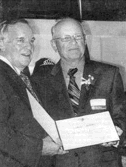
|
|
William
Milleker
Honored
by
Mayor
Daley
|

As a prelude to the Steuben Day Parade, Mayor Richard M.
Daley held a reception for the German-Americans in Chicago. The
program honored four deserving German-Americans who have tried
in a special way over the years to support the German-American
community and to preserve their traditions and customs. The
mayor presented each of them with a certificate of thanks and
recognition.
One of the recipients was William Milleker. He has worked
tirelessly for years on the board of the Society of Danube
Swabians and strives to preserve the traditions of this ethnic
group. Through his efforts, the Chicago Danube Swabian
Foundation was established. His exemplary leadership and
influence in the society as vice president, and readiness to
help in all activities, has exerted a positive effect on the
Society. He is also a member of the German Day Association,
where he has been active in various offices. He and his wife
Kathy have for many years been members of the German-American
Singers of Chicago and the German Choir at St. Alphonsus Church.

|

|



VISITING
AUTHOR/EDITOR ARTICLE
JANUARY
2010

Lemon
Picker ?
Forwarded
By Sgt. James S. Thornton

|
The woman applying for a
job in a Florida lemon grove
seemed to be far too qualified for
the job.
The foreman frowned and
said,
"I have to ask you
this:
"Have you had any
actual experience in picking
lemons?"
|
|
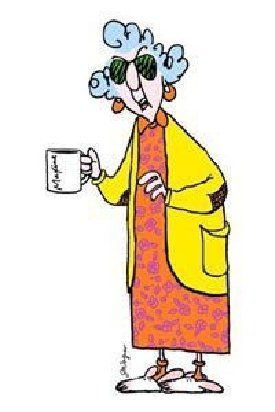
|
|
"Well, as a matter of
fact, I have!”
"I've been divorced
three times, owned 2 Chryslers,
and I voted for Obama”
|

|
|
|




VISITING
AUTHOR/EDITOR ARTICLE
JANUARY
2010
Indian
Wanting
Coffee

Forwarded
by Jon C. Zimmerman

 |
An Indian walks into a
cafe with a shotgun in
one hand and pulling a
male buffalo with the
other.
He says to the
waiter:
'Want coffee..'
|
 |
|
|

|
The
waiter says, 'Sure,
Chief. Coming right
up.'
|
|
He gets the Indian a tall
mug of coffee. The Indian drinks
the coffee down in one gulp,
turns and blasts the buffalo
with the shotgun, causing parts
of the animal to splatter
everywhere.
And then just walks out. |
|

|
The next
morning the Indian
returns. He has
his shotgun in one
hand and pulling
another male buffalo
with the other.
He walks up to
the counter and says
to The waiter:
'Want coffee.'
|

|
|
|
The
waiter says 'Whoa,
Tonto!
We're
still cleaning up your
mess from yesterday.
What was all
that about, anyway?'
|

|
|
|
The
Indian smiles and proudly says..
|
|

|
|
'Training
for position in United
States Congress:
Come
in, drink coffee, shoot the
bull;
Leave
mess for others to clean up;
Disappear
for rest of day.
|

|
|
|


|